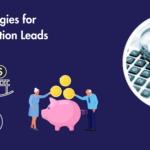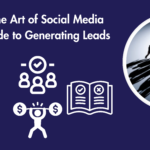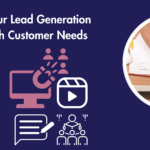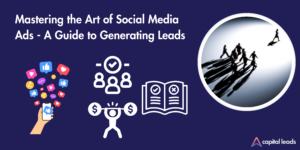Lead generation has evolved significantly . From the days of single-channel strategies to the current multi-channel approach. Initially, businesses relied heavily on one method, like print ads or cold calling, but the digital era has broadened the horizon. Now, they’re tapping into various channels – email, social media, SEO, and more.
The importance of a multi-channel strategy in today’s market is clear. Customers are no longer confined to a single source of information. They’re spread across different platforms, from online forums to social media.
By adopting a multi-channel approach, businesses are present wherever their potential clients are. Combining different channels, like online ads with email campaigns, can significantly boost the effectiveness of lead generation efforts.
The data gathered from these diverse channels provide valuable insights. This will then enable businesses to tailor their strategies for greater impact.
Understanding Multi-Channel Lead Generation
Defining Multi-Channel Lead Generation
Multi-channel lead generation is all about using a variety of different methods to attract potential customers or leads. It’s like NOT putting all your eggs in one basket. Instead of just sending out emails or only using social media, businesses use a mix of both.
This along with other strategies like SEO (getting your website to show up on Google). Together with blogs, and even traditional methods like networking events or print ads. This approach is designed to cover all bases – reaching people wherever they might be looking, whether it’s online, through email, or in a magazine.
The Benefits of a Multi-Channel Approach
The biggest plus of using multiple channels for lead generation is that it increases your chances of reaching more people. Think about it – not everyone spends their time the same way. Some might be avid email readers, while others might spend hours on social media. By being in more places, you’re more likely to get noticed by your target audience.
Another key benefit is the ability to engage with potential leads in different ways. For example, a well-crafted blog post can establish your business as a thought leader, while a targeted email campaign can provide a more direct and personal approach. This variety helps keep your audience engaged and interested.
Also, let’s talk about insights and analytics. When you’re using multiple channels, you gather a lot of data about your audience’s preferences and behaviours.
This information is gold for refining your marketing strategies, making them more effective over time. You learn what works and what doesn’t, which means you can focus your efforts and budget on the channels that give you the best return on investment.
A multi-channel approach can help safeguard your business against market changes. If one channel becomes less effective (like if a social media platform changes its algorithm), you’ve got other channels already working for you, so your lead generation doesn’t take a big hit.
Channel Deep-Dive: The Big Players
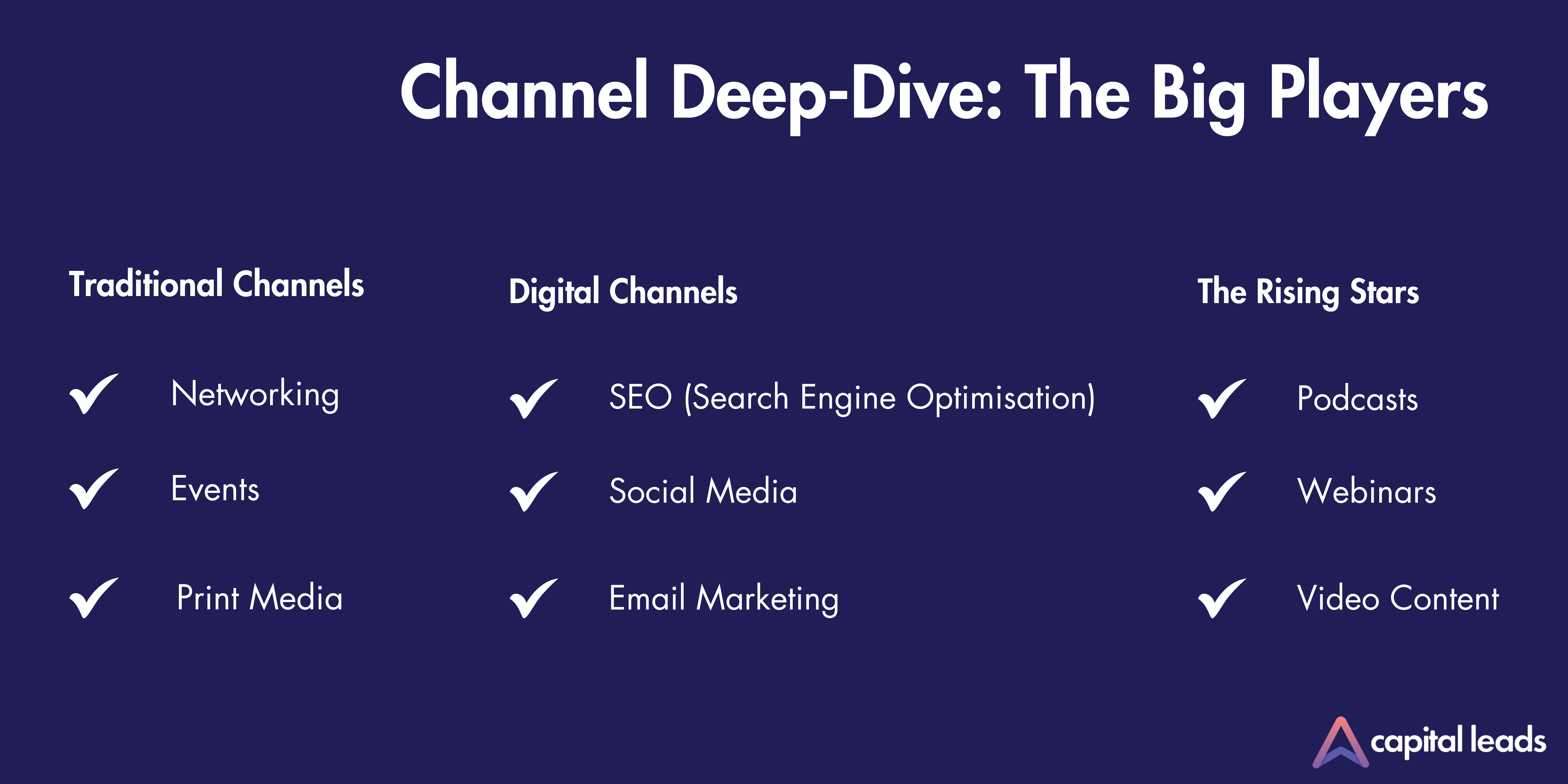
Digital Channels: SEO, Social Media, Email Marketing
SEO (Search Engine Optimisation)
This is all about getting your website to the top of search engine results. It’s a game-changer because when potential clients search for services or products you offer, you want to be the first name they see. SEO involves optimising your website’s content and structure. SEO works by using the right keywords, and building backlinks.
Social Media
Platforms like LinkedIn, Facebook, Instagram, and Twitter are invaluable for reaching out to and engaging with your audience. Each platform has its unique strengths – LinkedIn is great for B2B, while Instagram is perfect for visual storytelling. Social media allows for targeted advertising, direct communication with potential leads, and a way to showcase your brand’s personality.
Email Marketing
Far from being outdated, email marketing remains a cornerstone of digital marketing. It’s about sending tailored, valuable content right to the inboxes of your potential customers. The key is personalisation and providing content that’s relevant to your audience, whether it’s updates, offers, or insightful articles.
Traditional Channels: Networking, Events, Print Media
Networking
Personal connections still hold immense value. Networking, whether it’s at industry events, seminars, or local business meetups, can lead to valuable partnerships and client referrals. It’s about building relationships that can open doors to new opportunities.
Events
Hosting or participating in events, like trade shows or conferences, puts your brand right in front of a relevant audience. It’s a chance to showcase your products or services, engage directly with potential leads, and build brand awareness.
Print Media
Despite the digital age, print media like brochures, flyers, and magazine ads still have their place, especially in certain markets. They’re tangible, can be highly targeted, and often have a longer shelf life in homes and offices.
The Rising Stars: Podcasts, Webinars, Video Content
Podcasts
Increasingly popular, podcasts are a great way to engage with audiences in a more personal and conversational way. They offer a platform for sharing expertise, discussing industry trends, and building a community of interested listeners.
Webinars
Webinars provide an interactive platform to educate and engage with your audience. They can be used for product demos, Q&A sessions, or sharing insights about industry-specific topics. Webinars are effective in establishing your business as a knowledgeable authority in your field.
Video Content
Videos are highly engaging and shareable. From explainer videos to customer testimonials, they offer a dynamic way to convey your message. Platforms like YouTube allow for a broad reach, and video content can be integrated across various platforms like your website, social media, and even in email campaigns.
Crafting Your Multi-Channel Strategy
Identifying Your Audience: The Key to Channel Selection
The first step in crafting a winning multi-channel strategy is to know who you’re talking to. This means understanding your audience inside out – their preferences, behaviours, and where they spend their time. Are they professionals who are likely to be found on LinkedIn? Or are they younger consumers who scroll through Instagram?
Maybe they’re more traditional and prefer reading print media. Identifying your audience helps you choose the right channels to focus on. For instance, a B2B business targeting corporate clients might prioritise LinkedIn and email marketing, while a consumer-focused brand might lean more towards Instagram and Facebook.
Integrating Channels for a Cohesive Message
Once you’ve selected your channels, the next step is integration. This doesn’t just mean using multiple channels. It’s about creating a seamless experience for your audience across these channels. Your message and branding should be consistent, whether someone sees your ad on social media, reads your email newsletter, or attends a webinar you host.
This consistent branding builds trust and recognition. It’s also about timing and coordination. Make sure that your campaigns on different channels complement and reinforce each other. For example, if you’re launching a new product, your social media posts, email announcements, and webinars should all be synchronised in terms of timing and messaging.
Measuring Success: Analytics and Adjustments
Finally, to know if your strategy is working, you need to measure its success. This is where analytics come in.
Each channel offers its own set of metrics, like email open rates, social media engagement, or website traffic from SEO. By analysing these metrics, you can understand what’s working and what isn’t.
Maybe your emails are getting a lot of opens, but your social media ads aren’t getting many clicks. This information is crucial for making informed adjustments. It’s not just about collecting data; it’s about learning from it and tweaking your strategy accordingly.
Maybe you need to change your social media content or adjust the timing of your emails. Regularly reviewing and adjusting your strategy based on analytics. Make sure that your multi-channel approach remains effective. And it should continue to evolve with your audience’s preferences and market trends.
Challenges and Solutions in Multi-Channel Lead Generation

Overcoming Common Pitfalls: Budget Constraints, Channel Overload
One of the biggest challenges in multi-channel lead generation is managing a budget effectively. With so many channels available, it’s easy to spread your resources too thin. The key is to prioritise channels based on where your audience is most active and where you’ve seen the best ROI.
It’s better to be highly effective on a few channels than mediocre on many. For instance, if LinkedIn and email marketing are yielding the best results for a B2B business, it makes sense to allocate more budget there, rather than trying to be everywhere at once.
Another challenge is channel overload – both for the business and the audience. It’s important not to overwhelm your audience with too many messages across too many platforms.
Case Studies: Success Stories and Lessons Learned
Case Study 1
A solar panel company shifted its focus from heavy reliance on traditional print advertising to a more balanced strategy including SEO, targeted social media campaigns, and educational webinars. This shift not only increased their lead generation by 40% but also reduced cost per lead due to more efficient targeting.
Case Study 2
An auto loan provider faced challenges with low engagement on their social media platforms. By integrating customer testimonials and interactive content into their strategy, and linking these efforts with email campaigns offering exclusive insights, they saw a 30% increase in engagement and a significant uptick in qualified leads.
These case studies demonstrate how businesses can overcome common challenges in multi-channel lead generation.
By focusing on the right mix of channels, creating tailored content, and learning from each campaign, businesses can effectively navigate the complexities of multi-channel marketing, leading to successful lead generation and growth.
Conclusion and Key Takeaways
Multi-channel lead generation is an ongoing process of adaptation and refinement. Understanding that no single channel can reach every potential customer effectively. Businesses must embrace the diversity of digital and traditional channels. The key is to identify where your audience spends their time and how they prefer to receive information.
By integrating various channels like SEO, social media, email marketing, along with traditional methods such as networking and print media, you create multiple touchpoints that can attract a wider audience.
This journey is not without its challenges. But with the right approach, it can be incredibly rewarding. Budget constraints and channel overload are common hurdles. Yet they can be overcome with strategic planning and prioritisation. Remember, it’s not about being everywhere at once, but about being effective where it matters most.
Final Tips and Tricks for Maximising Lead Generation
Tailor Your Content
Customise your content for each channel. What works on LinkedIn might not work on Instagram. Understand the nuances of each platform and adapt your message accordingly.
Leverage Data and Analytics
Use the data from your campaigns to make informed decisions. Track metrics like engagement rates, click-through rates, and conversion rates to understand what’s working and what’s not.
Be Consistent Yet Flexible
Consistency in messaging is key to building brand recognition and trust. However, be flexible enough to adapt your strategy based on performance and changing market trends.
Engage and Interact
Engagement is a two-way street. Don’t just broadcast your message; interact with your audience. Respond to comments, participate in discussions, and create content that encourages engagement.
Test and Experiment
Don’t be afraid to try new things. Experiment with different types of content, timing, and platforms. Sometimes, the most unexpected approach can yield the best results.
Focus on Quality Over Quantity
It’s better to have a strong presence on a few key channels than a weak presence on many. Invest in creating quality content that resonates with your audience and represents your brand well.
By understanding your audience, integrating your channels effectively, and continually measuring and adjusting your strategy, you can maximise your lead generation efforts and grow your business successfully.
But if you’re looking for a more hands-off approach while still reaping the benefits of sophisticated, high-quality lead generation, then Capital Leads is your go-to solution.
Visit Capital Leads and discover how our expertise can transform your business. We offer a hassle-free service with 100% exclusive leads that your sales team will love. With over 10 years deep in digital and an additional 20+ years in sales experience, we understand every aspect of the journey from nurturing leads to closing sales.
Choose Capital Leads for a seamless, effective lead generation strategy tailored to your business needs.


